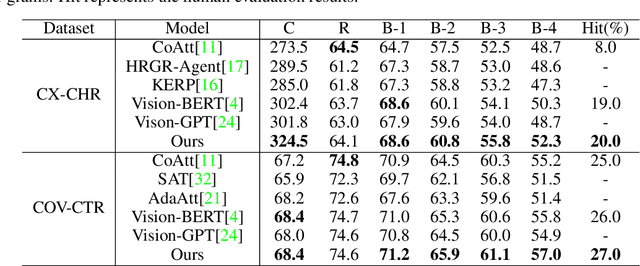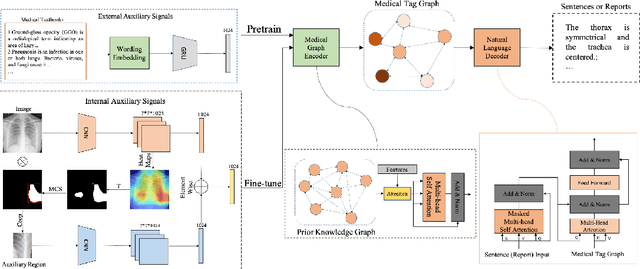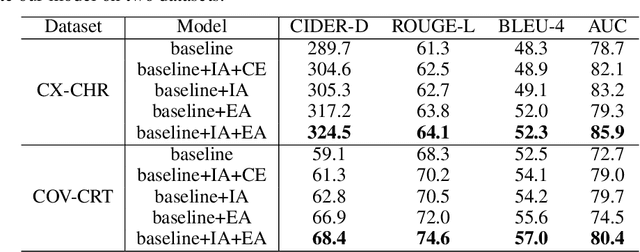Auxiliary Signal-Guided Knowledge Encoder-Decoder for Medical Report Generation
Paper and Code
Jun 06, 2020



Beyond the common difficulties faced in the natural image captioning, medical report generation specifically requires the model to describe a medical image with a fine-grained and semantic-coherence paragraph that should satisfy both medical commonsense and logic. Previous works generally extract the global image features and attempt to generate a paragraph that is similar to referenced reports; however, this approach has two limitations. Firstly, the regions of primary interest to radiologists are usually located in a small area of the global image, meaning that the remainder parts of the image could be considered as irrelevant noise in the training procedure. Secondly, there are many similar sentences used in each medical report to describe the normal regions of the image, which causes serious data bias. This deviation is likely to teach models to generate these inessential sentences on a regular basis. To address these problems, we propose an Auxiliary Signal-Guided Knowledge Encoder-Decoder (ASGK) to mimic radiologists' working patterns. In more detail, ASGK integrates internal visual feature fusion and external medical linguistic information to guide medical knowledge transfer and learning. The core structure of ASGK consists of a medical graph encoder and a natural language decoder, inspired by advanced Generative Pre-Training (GPT). Experiments on the CX-CHR dataset and our COVID-19 CT Report dataset demonstrate that our proposed ASGK is able to generate a robust and accurate report, and moreover outperforms state-of-the-art methods on both medical terminology classification and paragraph generation metrics.
 Add to Chrome
Add to Chrome Add to Firefox
Add to Firefox Add to Edge
Add to Edge